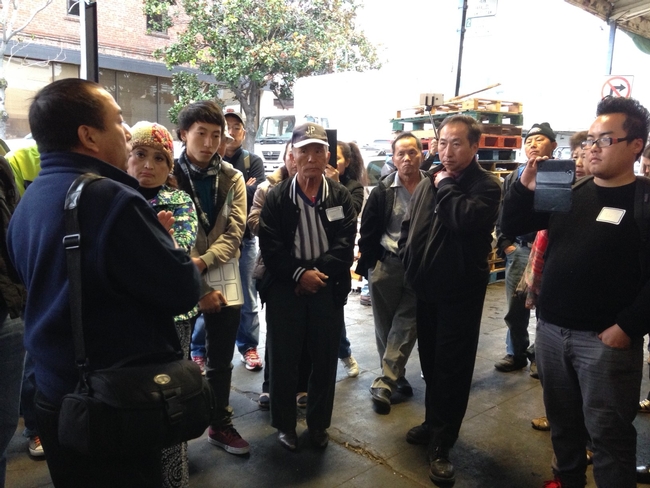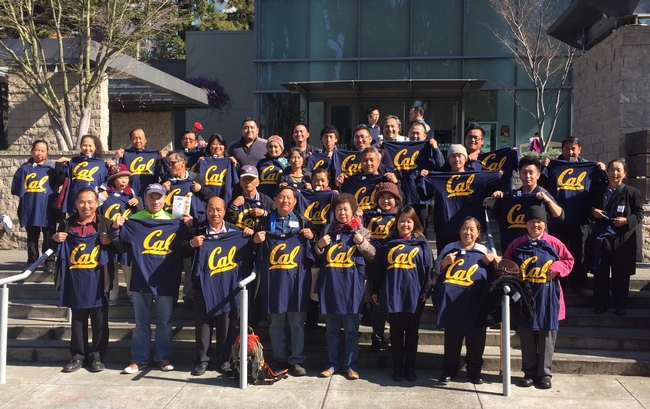
It's not easy for immigrant farmers to market their produce. They often lack the contacts or even language skills to forge business relationships with large produce distributors. Meanwhile, consumers are clamoring for fresh, locally grown fruits and vegetables and produce buyers are working to meet that demand by purchasing more from small-scale and local growers.
Small-scale farmers, mostly Hmong immigrants, from the Fresno area toured the Bay Area on Feb. 18 to meet wholesale produce buyers and distributors to learn how the operations work and what they need from growers. The tour was organized by the UC Agriculture and Natural Resources (UC ANR) and its Sustainable Agricultural Research and Education Program (SAREP).
“The Hmong farmers returned to Fresno with buyers who want to purchase their products,” said Thomas Nelson, UC ANR SAREP's sustainable supply chain analyst, who led the tour. “The day gave them a sense of the opportunities, market demand and next steps for growing their businesses.”

John Wong, president of Pacific Rim Produce, buys from local farmers to offer more than 200 produce items to supermarkets, restaurants, food processors, food service delivery companies, hotels, and casinos.
Four things are essential to being a successful farmer, “Growing, marketing, commitment and branding,” said Wong, who takes pride in coaching small-scale growers to build successful businesses.
Growing quality produce, packing and storing it under the best conditions to preserve the quality are important, he said, with Michael Yang, UC ANR Cooperative Extension Hmong agricultural assistant in Fresno County, translating the conversation for the growers.

Wong encouraged the growers to build a brand for their businesses so that consumers will recognize their products in markets. He also cautioned against hurting their reputation by breaking a commitment to sell to a buyer if another buyer offers a higher price.
On Feb. 24, UC ANR SAREP will host Bay Area farmers for a similar tour to meet with produce buyers.
“The February 24 tour will introduce beginning farmers to traditional and innovative values-based channels for selling their products,” said Nelson.” In addition to buyers, the farmers will meet other key actors who are working to build sustainable and local food supply chains, including food safety experts, microfinance lenders, food hubs operators.”
For more information about times and locations for the Bay Area market tour or to sign up, visit http://ucanr.edu/markettour2015.

The University of California Global Food Initiative aims to put the world on a path to sustainably and nutritiously feed itself. By building on existing efforts and creating new collaborations among UC's 10 campuses, affiliated national laboratories and the Division of Agriculture and Natural Resources, the initiative will develop and export solutions for food security, health and sustainability throughout California, the United States and the world.